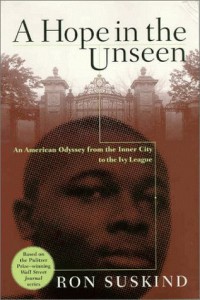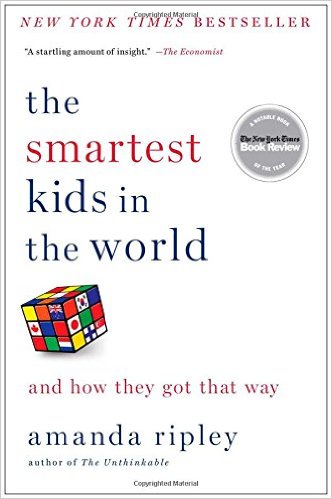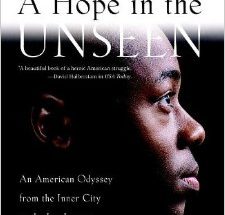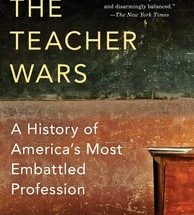 Ron Suskind’s detailed narrative of Cedric Jennings’s journey from the violent neighborhoods of Southeast D.C. to the Ivy League campus of Brown University is an in-depth look into struggles with race, class, education and identity. By writing Hope in the Unseen in a narrative style, Suskind presents many contentious issues such as religion, poverty, affirmative action, through one boy’s experience. For every experience Cedric has, Suskind chose not to include bigger picture data. The chronicle of one boy’s life over a period of three years told it all.
Ron Suskind’s detailed narrative of Cedric Jennings’s journey from the violent neighborhoods of Southeast D.C. to the Ivy League campus of Brown University is an in-depth look into struggles with race, class, education and identity. By writing Hope in the Unseen in a narrative style, Suskind presents many contentious issues such as religion, poverty, affirmative action, through one boy’s experience. For every experience Cedric has, Suskind chose not to include bigger picture data. The chronicle of one boy’s life over a period of three years told it all.
Suskind found Cedric while reporting a series for the Wall Street Journal on honor students at a very poor school (Suskind won the Pulitzer Prize for his work). Much of the book’s success could be attributed to the detailed reporting and the access Suskind had in Cedric’s high school, and later, his university. Suskind’s unlimited access to the Ballou High allowed him to profile various teachers and students and follow Cedric closely. Perhaps one of the best aspects of Suskind’s agreement with Brown University was a limited description access—professors and students were not informed whom Suskind was following. This allowed the reporter to ask professors about their students and observe daily dorm life for a minority student at an Ivy League school.
Suskind also presents aspects of Cedric and his mother, Barbara’s, life that could be taken very differently by Suskind’s possible audiences. For example in the beginning of the book, Suskind chose to include an anecdote about the day Barbara went to an abortion clinic before Cedric was born. She was struck by strong emotion and left the clinic. This scene kicks off the life story of Cedric–a jarring choice.
Another example is that of religion. The Pentecostal Church is the foundation of the Jennings’s family life. Suskind provides the reader with details to understand the family’s extreme poverty while also including the amount they tithe each week. In one scene Barbara has one $10 and one $20 bill that must last for the week’s food for mother and teenaged son. Suskind writes in an internal voice, describing the woman’s thoughts as she grappled with the idea of donating the $10, keeping the $20, and later deciding to give away the $20 after listening to the Bishop’s sermon. It seemed like an outrageous sum relatively speaking, but as the novel progresses we see how faith in God keeps Cedric pushing forward. Suskind leaves out the story of the church, however, including its history and its place in urban families’ lives in D.C. in the mid-1990’s.
Very little information is provided, apart from a few paragraphs in the 380-page book, about affirmative action or other programs that help Cedric. The reader knows Cedric has received the benefits, though once again, the larger picture data doesn’t play a role. Hope in the Unseen makes it difficult to argue against programs that help kids like Cedric—those who spend their entire lives trading friends and fitting in for academics, who struggle with hunger at home and nights without heat. The book also may be working to show the importance of a parent involvement in education. Barbara Jennings’s very strict rules governing her son are attributed to Cedric’s success. In any case we see the challenges at every point, from junior year to his first at Brown University, for Cedric Jennings.
As a student of long form journalism and in depth reporting, it was fascinating to read of Suskind’s extreme closeness to the Jennings. Because he chose to use an internal voice, going over passages, quotes and description with the book’s central characters was essential. Cedric was given a manuscript to read over for accuracy and Suskind spoke at length with each of the 12 characters to ensure he was representing them in ways they felt were fair. Only two names were changed, at the students’ request.



